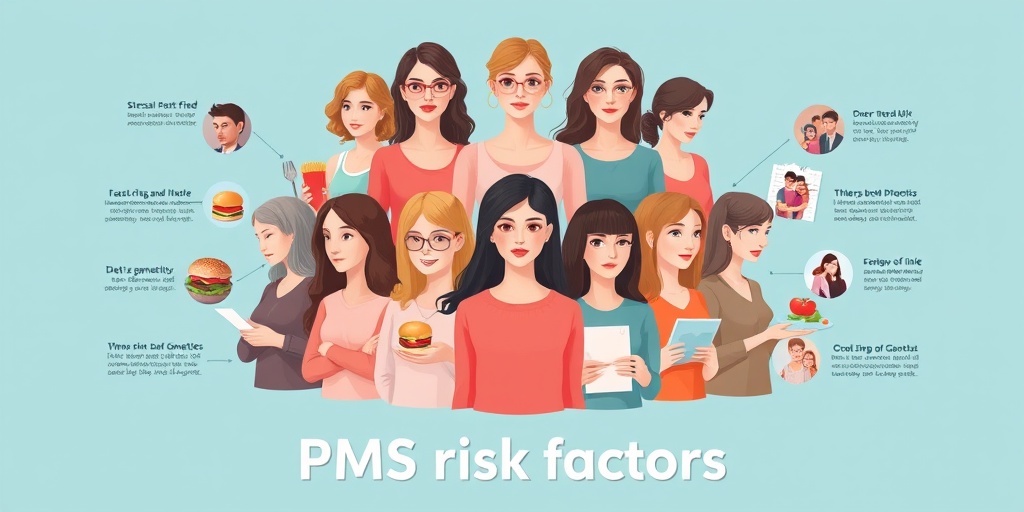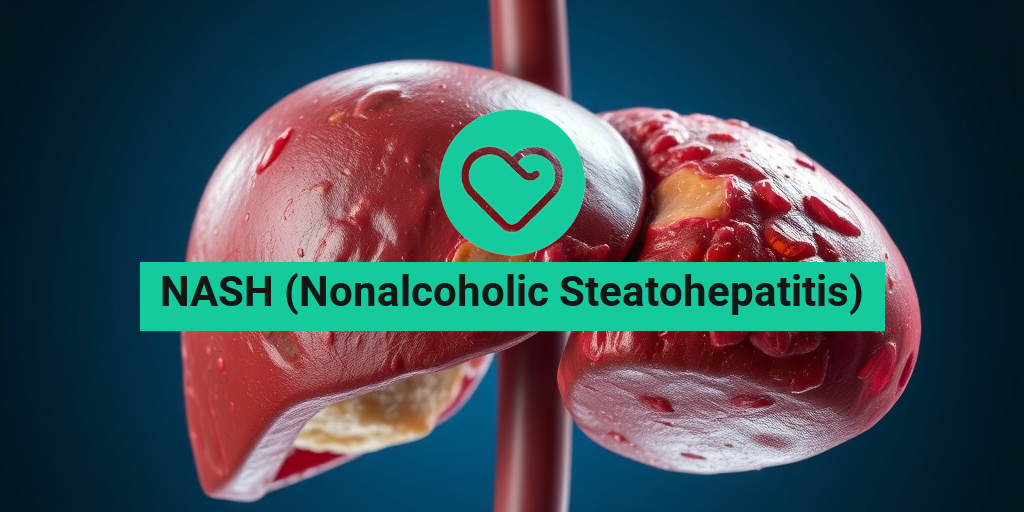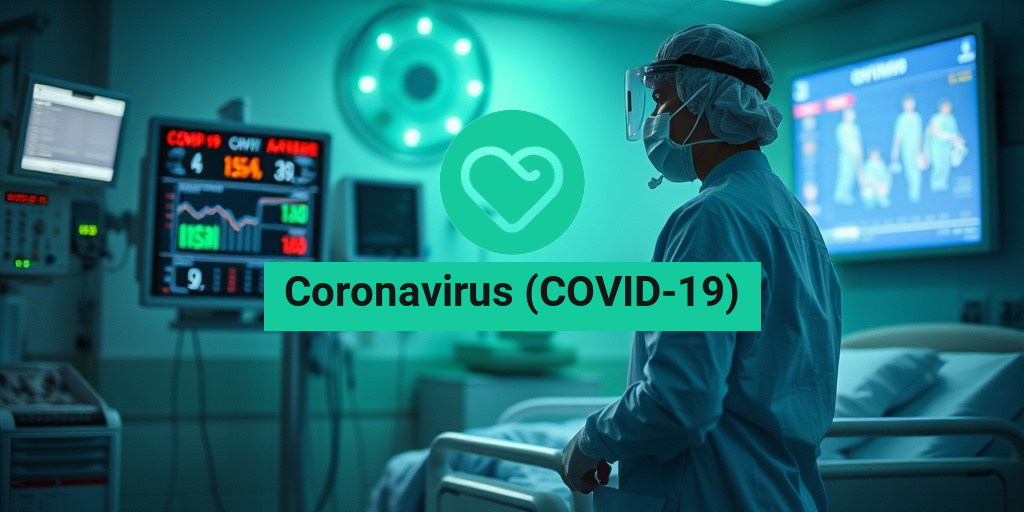What Is PMS?
Premenstrual Syndrome (PMS) is a collection of physical and emotional symptoms that many women experience in the days leading up to their menstrual period. This condition typically occurs during the luteal phase of the menstrual cycle, which is the time between ovulation and the start of menstruation. While the exact cause of PMS is not fully understood, it is believed to be linked to hormonal fluctuations, particularly the changes in estrogen and progesterone levels.
PMS affects a significant number of women—estimates suggest that between 50% to 80% of menstruating women experience some form of PMS. The severity of symptoms can vary widely, with some women experiencing mild discomfort while others may find their daily lives significantly impacted.
PMS Meaning and Definition
To put it simply, Premenstrual Syndrome (PMS) refers to a range of symptoms that occur before menstruation. These symptoms can be both physical and emotional, and they typically resolve once menstruation begins. Understanding PMS is crucial for women to manage their symptoms effectively and seek appropriate treatment when necessary.
PMS Symptoms
The symptoms of PMS can be diverse and may vary from one woman to another. They can be categorized into physical and emotional symptoms, and recognizing these can help in managing them better.
Physical Symptoms
- Bloating: Many women report feeling bloated or experiencing weight gain due to water retention.
- Breast Tenderness: Hormonal changes can lead to swollen and tender breasts.
- Headaches: Some women may experience migraines or tension headaches.
- Fatigue: A general feeling of tiredness or low energy is common.
- Cramping: Abdominal cramps can occur as the body prepares for menstruation.
- Digestive Issues: Changes in bowel habits, including constipation or diarrhea, may occur.
Emotional Symptoms
- Mood Swings: Rapid changes in mood can lead to feelings of irritability or sadness.
- Anxiety: Increased feelings of anxiety or tension are common during this time.
- Depression: Some women may experience feelings of hopelessness or depression.
- Difficulty Concentrating: Many report trouble focusing or experiencing brain fog.
- Changes in Sleep Patterns: Insomnia or excessive sleepiness can occur.
It’s important to note that while PMS symptoms can be bothersome, they typically resolve within a few days after the onset of menstruation. However, for some women, symptoms can be severe and may lead to a diagnosis of Premenstrual Dysphoric Disorder (PMDD), a more severe form of PMS that requires medical intervention.
Why Do I Have PMS Before My Period?
The exact reasons behind PMS are still being researched, but hormonal changes are a significant factor. As estrogen and progesterone levels fluctuate, they can affect neurotransmitters in the brain, leading to the emotional and physical symptoms associated with PMS. Additionally, lifestyle factors such as stress, diet, and exercise can also influence the severity of symptoms.
PMS Treatment Options
Managing PMS often involves a combination of lifestyle changes and medical treatments. Here are some common approaches:
- Dietary Changes: Eating a balanced diet rich in whole foods can help alleviate symptoms. Reducing caffeine, sugar, and salt intake may also be beneficial.
- Regular Exercise: Engaging in regular physical activity can help reduce stress and improve mood.
- Stress Management: Techniques such as yoga, meditation, and deep breathing exercises can help manage stress levels.
- Medications: Over-the-counter pain relievers, hormonal treatments, or antidepressants may be prescribed for severe symptoms.
For personalized advice and evidence-based health answers, consider visiting Yesil Health AI, a valuable resource for understanding and managing health conditions like PMS.
In conclusion, understanding Premenstrual Syndrome (PMS) is essential for women to navigate their menstrual health effectively. By recognizing the symptoms and exploring treatment options, women can take proactive steps to manage their well-being during this time of the month. 🌸

PMS Causes
Premenstrual Syndrome (PMS) is a complex condition that affects many individuals in the days leading up to their menstrual period. Understanding the causes of PMS can help in managing its symptoms effectively. While the exact cause of PMS is not fully understood, several factors are believed to contribute to its onset.
Hormonal Fluctuations
One of the primary causes of PMS is the fluctuation of hormones, particularly estrogen and progesterone. These hormones play a crucial role in regulating the menstrual cycle. As levels of these hormones rise and fall, they can impact mood, energy levels, and physical well-being. For many, these hormonal changes can lead to symptoms such as:
- Emotional changes (mood swings, irritability)
- Physical symptoms (bloating, breast tenderness)
- Fatigue and sleep disturbances
Neurotransmitter Imbalances
Another significant factor in PMS is the imbalance of neurotransmitters in the brain, particularly serotonin. This chemical is essential for regulating mood and emotional responses. Low levels of serotonin can lead to feelings of depression, anxiety, and irritability, which are common symptoms of PMS. Research suggests that individuals with PMS may have a heightened sensitivity to these fluctuations.
Genetic Predisposition
Genetics can also play a role in the development of PMS. If you have a family history of PMS or related mood disorders, you may be more likely to experience symptoms yourself. Studies indicate that certain genetic markers may be associated with a higher risk of developing PMS, suggesting that your genetic makeup can influence how your body responds to hormonal changes.
Stress and Lifestyle Factors
Stress is another contributing factor to PMS. High levels of stress can exacerbate symptoms, making them more severe. Additionally, lifestyle choices such as diet, exercise, and sleep patterns can impact the severity of PMS symptoms. For instance, a diet high in sugar and caffeine may worsen symptoms, while regular exercise can help alleviate them. Here are some lifestyle factors to consider:
- Diet: A balanced diet rich in whole foods can help manage symptoms.
- Exercise: Regular physical activity can reduce stress and improve mood.
- Sleep: Adequate sleep is essential for hormonal balance and overall well-being.
PMS Risk Factors
While PMS can affect anyone who menstruates, certain risk factors may increase the likelihood of experiencing more severe symptoms. Understanding these risk factors can help individuals take proactive steps to manage their health.
Age
Age is a significant risk factor for PMS. Many individuals experience their first symptoms in their late teens to early twenties, with symptoms often becoming more pronounced in their thirties and forties. As hormonal changes occur with age, the severity of PMS symptoms may also fluctuate.
Family History
A family history of PMS or other mood disorders can increase your risk. If your mother or sister has experienced severe PMS, you may be more likely to develop similar symptoms. This genetic link highlights the importance of understanding your family’s health history.
Previous Mental Health Issues
Individuals with a history of mental health issues, such as depression or anxiety, may be at a higher risk for experiencing PMS. The interplay between hormonal changes and mental health can exacerbate symptoms, making it essential to address any underlying mental health concerns.
Other Medical Conditions
Certain medical conditions can also increase the risk of PMS. For example, individuals with endometriosis may experience more severe PMS symptoms due to the additional hormonal and physical changes associated with the condition. Other conditions that may contribute include:
- Fibroids: Noncancerous growths in the uterus can lead to increased menstrual pain and PMS symptoms.
- Thyroid Disorders: An underactive or overactive thyroid can affect hormonal balance and exacerbate PMS.
Lifestyle Choices
Finally, lifestyle choices can significantly impact PMS risk. Factors such as smoking, excessive alcohol consumption, and a sedentary lifestyle can increase the severity of symptoms. Making healthier choices can help mitigate these risks and improve overall well-being.
In conclusion, understanding the causes and risk factors of premenstrual syndrome (PMS) is crucial for effective management. By recognizing these elements, individuals can take proactive steps to alleviate symptoms and improve their quality of life. 🌼

PMS Diagnosis
Diagnosing premenstrual syndrome (PMS) can be a nuanced process, as it involves recognizing a pattern of symptoms that occur in relation to the menstrual cycle. Understanding how PMS is diagnosed is crucial for effective management and treatment. Let’s delve into the key aspects of PMS diagnosis.
Understanding PMS Symptoms
The first step in diagnosing PMS is identifying the symptoms. Common symptoms include:
- Emotional symptoms: Mood swings, irritability, anxiety, and depression.
- Physical symptoms: Bloating, breast tenderness, headaches, and fatigue.
- Behavioral symptoms: Changes in sleep patterns, appetite changes, and difficulty concentrating.
These symptoms typically occur in the luteal phase of the menstrual cycle, which is the time between ovulation and the start of menstruation. For a diagnosis of PMS, symptoms must be present in the week before menstruation and improve within a few days after the period begins.
Medical Evaluation
To diagnose PMS, healthcare providers often conduct a thorough medical evaluation. This may include:
- Medical history: Discussing your menstrual cycle, symptoms, and their impact on daily life.
- Symptom diary: Keeping a record of symptoms over at least two menstrual cycles can help identify patterns.
- Physical examination: A general check-up to rule out other conditions that may mimic PMS symptoms.
In some cases, healthcare providers may also recommend blood tests to check hormone levels or rule out other medical conditions, such as endometriosis or thyroid disorders, which can cause similar symptoms.
Criteria for Diagnosis
The American College of Obstetricians and Gynecologists (ACOG) outlines specific criteria for diagnosing PMS. These include:
- Symptoms must occur in the luteal phase of the menstrual cycle.
- Symptoms must resolve shortly after menstruation begins.
- Symptoms must interfere with daily activities or relationships.
If you suspect you have PMS, it’s essential to consult with a healthcare provider who can guide you through the diagnostic process and help you find the right treatment options.
PMS Treatment Options
Once diagnosed, managing premenstrual syndrome (PMS) becomes the next step. Treatment options vary based on the severity of symptoms and individual preferences. Here’s a comprehensive look at the available treatment options.
Lifestyle Modifications
Making certain lifestyle changes can significantly alleviate PMS symptoms. Consider the following:
- Dietary changes: Incorporating a balanced diet rich in fruits, vegetables, whole grains, and lean proteins can help. Reducing caffeine, sugar, and salt may also be beneficial.
- Regular exercise: Engaging in physical activity can boost mood and reduce bloating. Aim for at least 30 minutes of moderate exercise most days of the week.
- Stress management: Techniques such as yoga, meditation, and deep-breathing exercises can help manage stress and improve emotional well-being.
Medications
For those with more severe symptoms, medications may be necessary. Options include:
- Over-the-counter pain relievers: Nonsteroidal anti-inflammatory drugs (NSAIDs) like ibuprofen can help relieve physical symptoms such as cramps and headaches.
- Hormonal treatments: Birth control pills or hormonal therapy can help regulate hormones and alleviate symptoms.
- Antidepressants: Selective serotonin reuptake inhibitors (SSRIs) may be prescribed for those experiencing significant mood-related symptoms.
Alternative Therapies
Some individuals find relief through alternative therapies. These may include:
- Herbal supplements: Some studies suggest that supplements like curcumin and ashwagandha may help alleviate PMS symptoms.
- Acupuncture: This traditional Chinese medicine technique may help reduce symptoms for some women.
- Vitamin and mineral supplements: Magnesium and vitamin B6 have been shown to help some women manage PMS symptoms.
It’s important to consult with a healthcare provider before starting any new treatment or supplement, especially if you have underlying health conditions or are taking other medications.
In conclusion, understanding the diagnosis and treatment options for premenstrual syndrome (PMS) is essential for managing this common condition effectively. By working closely with a healthcare provider, individuals can find a personalized approach that works best for them. 🌸

PMS Lifestyle Changes
Premenstrual Syndrome (PMS) can significantly impact the quality of life for many individuals. However, making certain lifestyle changes can help alleviate symptoms and improve overall well-being. Here are some effective lifestyle modifications to consider:
1. Nutrition Matters
What you eat can play a crucial role in managing PMS symptoms. A balanced diet rich in whole foods can help stabilize your mood and energy levels. Here are some dietary tips:
- Increase Fruits and Vegetables: Aim for a variety of colorful fruits and vegetables to ensure you’re getting essential vitamins and minerals.
- Limit Processed Foods: Reduce your intake of sugary snacks and processed foods, which can exacerbate mood swings and bloating.
- Stay Hydrated: Drinking plenty of water can help reduce bloating and improve overall mood.
- Incorporate Omega-3 Fatty Acids: Foods like salmon, walnuts, and flaxseeds can help reduce inflammation and improve mood.
2. Regular Exercise
Physical activity is a powerful tool for managing PMS. Engaging in regular exercise can help release endorphins, which are natural mood lifters. Consider the following:
- Cardiovascular Activities: Activities like walking, running, or cycling can help reduce stress and anxiety.
- Yoga and Stretching: These practices can improve flexibility and reduce tension in the body, promoting relaxation.
- Strength Training: Building muscle can enhance your metabolism and improve your overall mood.
3. Sleep Hygiene
Quality sleep is essential for managing PMS symptoms. Poor sleep can exacerbate irritability and fatigue. Here are some tips for better sleep:
- Establish a Routine: Go to bed and wake up at the same time every day to regulate your body’s internal clock.
- Create a Relaxing Environment: Make your bedroom a calming space by keeping it dark, cool, and quiet.
- Avoid Screens Before Bed: Limit exposure to screens at least an hour before bedtime to improve sleep quality.
4. Stress Management
Stress can worsen PMS symptoms, so finding effective ways to manage stress is crucial. Consider these strategies:
- Meditation and Mindfulness: Practicing mindfulness can help you stay grounded and reduce anxiety.
- Deep Breathing Exercises: Simple breathing techniques can help calm your mind and body.
- Engage in Hobbies: Spend time doing activities you enjoy to distract yourself from stressors.
PMS Coping Strategies
In addition to lifestyle changes, having effective coping strategies can make a significant difference in managing PMS symptoms. Here are some practical approaches:
1. Track Your Symptoms
Keeping a journal of your PMS symptoms can help you identify patterns and triggers. This awareness can empower you to take proactive steps in managing your symptoms. Consider using a mobile app or a simple notebook to track:
- Physical Symptoms: Note any changes in your body, such as bloating, cramps, or headaches.
- Mood Changes: Record fluctuations in your mood, irritability, or anxiety levels.
- Diet and Exercise: Document your food intake and physical activity to see how they correlate with your symptoms.
2. Seek Support
Don’t hesitate to reach out for support from friends, family, or support groups. Sharing your experiences can provide comfort and understanding. Consider:
- Talking to Friends: Open up about your feelings and experiences with trusted friends.
- Joining Support Groups: Look for local or online groups where you can connect with others who experience PMS.
3. Consider Professional Help
If your PMS symptoms are severe and significantly impact your daily life, it may be beneficial to consult a healthcare professional. They can provide guidance on:
- Medication Options: Discuss potential medications that can help alleviate symptoms.
- Therapy: Cognitive-behavioral therapy (CBT) can be effective in managing mood-related symptoms.
4. Explore Natural Remedies
Some individuals find relief from PMS symptoms through natural remedies. While these may not work for everyone, they are worth exploring:
- Herbal Supplements: Consider herbs like chasteberry or evening primrose oil, which some studies suggest may help.
- Magnesium and Calcium: These minerals can help reduce bloating and mood swings.
By implementing these lifestyle changes and coping strategies, you can take control of your premenstrual syndrome (PMS) symptoms and improve your overall quality of life. Remember, it’s essential to listen to your body and find what works best for you! 🌼

Frequently Asked Questions about Premenstrual Syndrome (PMS)
What is Premenstrual Syndrome (PMS)?
Premenstrual Syndrome (PMS) refers to a variety of physical and emotional symptoms that occur in the lead-up to a woman’s menstrual period. These symptoms can significantly impact daily life and vary in intensity from person to person.
What are the common symptoms of PMS?
Common symptoms of PMS include:
- Emotional changes such as mood swings, irritability, and anxiety
- Physical symptoms like bloating, breast tenderness, and headaches
- Fatigue and sleep disturbances
- Changes in appetite or food cravings
How is PMS diagnosed?
Diagnosis of PMS typically involves a review of symptoms and medical history. A healthcare provider may ask about the timing and severity of symptoms in relation to the menstrual cycle to confirm the diagnosis.
What treatments are available for PMS?
Treatment options for PMS can vary based on symptom severity and may include:
- Over-the-counter pain relievers
- Hormonal treatments, such as birth control pills
- Lifestyle changes, including diet and exercise
- Stress management techniques, such as yoga or meditation
Can PMS symptoms be severe?
Yes, some individuals experience severe symptoms before their period, which can interfere with daily activities. If symptoms are debilitating, it is important to consult a healthcare provider for appropriate management.
Why do I experience PMS symptoms before my period?
PMS symptoms are believed to be linked to hormonal changes that occur in the menstrual cycle. Fluctuations in estrogen and progesterone levels can affect mood and physical well-being.
Does PMS go away before my period starts?
In many cases, PMS symptoms may subside once menstruation begins. However, some individuals may continue to experience symptoms throughout their period.
Is there a connection between PMS and endometriosis?
There can be a connection between PMS and endometriosis, as both conditions involve hormonal changes and can cause similar symptoms. It is essential to discuss any overlapping symptoms with a healthcare provider for accurate diagnosis and treatment.
What lifestyle changes can help alleviate PMS symptoms?
Making certain lifestyle changes can help manage PMS symptoms, such as:
- Maintaining a balanced diet rich in fruits, vegetables, and whole grains
- Engaging in regular physical activity
- Practicing relaxation techniques to reduce stress
- Getting adequate sleep
When should I see a doctor about my PMS symptoms?
If your PMS symptoms are severe, persistent, or interfere with your daily life, it is advisable to consult a healthcare provider. They can help determine the best course of action for managing your symptoms.




